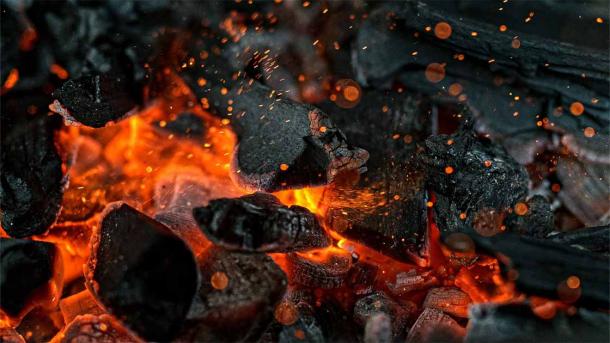
People Were Hanging Out by Fire Pits 250,000 Years Ago
Until now, the use of controlled fires for cooking, in Europe, was thought to have begun around 200,000 years ago. However, scientists in Spain have discovered a set of small prehistoric fire pits or hearths, along with tools and traces of food, which they claim dates certain human social behavior to a ‘history changing’ 250,000-years-ago.
Every once in a while, a story comes along that turns history on its head, and this might be one of them. The big deal here is that a team of scientists have presented evidence gathered from ancient campfires in Spain, that suggests early human ancestors cooked with fire as early as 250,000 years ago, which is some 50,000 years earlier than previously thought.
The Earliest Evidence of Human Built Fire Pits
The new study was published in the Journal Scientific Reports by Professor Lavinia M. Stancampiano, from the Lyell Centre for Earth & Marine Science & Technology, Heriot-Watt University, Edinburgh, UK. The researchers opened their paper informing that oldest evidence of hominins cooking with fire was discovered in Africa with an estimated age of 1.5 million years ago.
In Africa and the Middle East archaeologists have found evidence suggesting the controlled use of fire dates back more than 700,000 years, and in Europe for the last 400,000 years.
Now, a team of researchers claim to have found “the earliest evidence for human built fire pits,” that according to a report in The Guardian, “could have been made for hanging out and heating food”.
- Shocking Evidence Homo Naledi Used Fire 230,000 Years Ago
- Cooking Timeline Just Got Burned: Hominins Were Cooking 780,000 Years Ago
Pushing Back the Human Technological Timeline
Until now, archaeologists generally agreed the first attempts at building organized fires for cooking and socializing occurred in Europe around 200,000 years ago. However, coauthor of the study, Dr Clayton Magill, an assistant professor at Heriot-Watt University, said a team of archaeologists exploring the Valdocarros II site, east of Madrid, discovered “the oldest evidence of human-controlled fire meant for cooking and social interaction.” Magil declared that the dating results from the Valdocarros II site, “push that date back 50,000 years”.

Fire pits have been discovered in Europe dating back 250,000 years. (Lukas Gojda/Adobe Stock)
The Valdocarros II site was inhabited by early human ancestors, possibly Homo heidelbergensis or Neanderthals. Recent archaeological excavations at the site have revealed stone tools, animal remains, and hearths containing organic residues. The team of researchers analyzed the organic materials and found animal fats and plants, as well as charred materials, and they deduced that the fires had burned at temperatures “between about 280C and 350C”.
- Human Fire Use Over A Million Years Ago Seems More Likely
- The Ancient Mystery of the Ever-Burning Lamps
The Best Parties Happen in the Kitchen
Already, the chefs among you will be dancing in your seats, wondering, or knowing what 280C (536F) to 350C (662F) is the ideal temperature for cooking. Magil said this temperature range is “the sweet spot, not for dedicated heating, or for persistently scaring animals” but specifically for cooking.
Supporting the idea of organized fires being used for cooking around 250,000-years-ago, Magil added that the research team discovered “degradation products from pine trees and fungus.” Knowing pine trees weren’t available locally, pine for burning must have been collected elsewhere and taken to the site. The team notes that many Indigenous peoples in the modern world use rotting wood for fires, “because it’s easier to burn at 280C to 350C, for controlled cooking.”
Fire On Demand?
Having found evidence of controlled cooking, the researchers speculate that this would almost definitely mean that “a social structure and language” was in existence. The authors of the study argue that to have cooked food on fires, teamwork was required to catch, slaughter and butcher large animals, and to collect and sustain stocks of suitable firewood.
Furthermore, these findings also suggest the ancient chefs must have had the tools required to have started fires whenever required. And while the species of early humans who set these cooking fires some 250,000 years ago is currently unknown, it is hoped that an analysis of the stone tools found near the hearths will soon answer this question.
Top image: Were ancient humans hanging out by the fire pits like people do today? Source: Viks_jin/Adobe Stock
By Ashley Cowie















